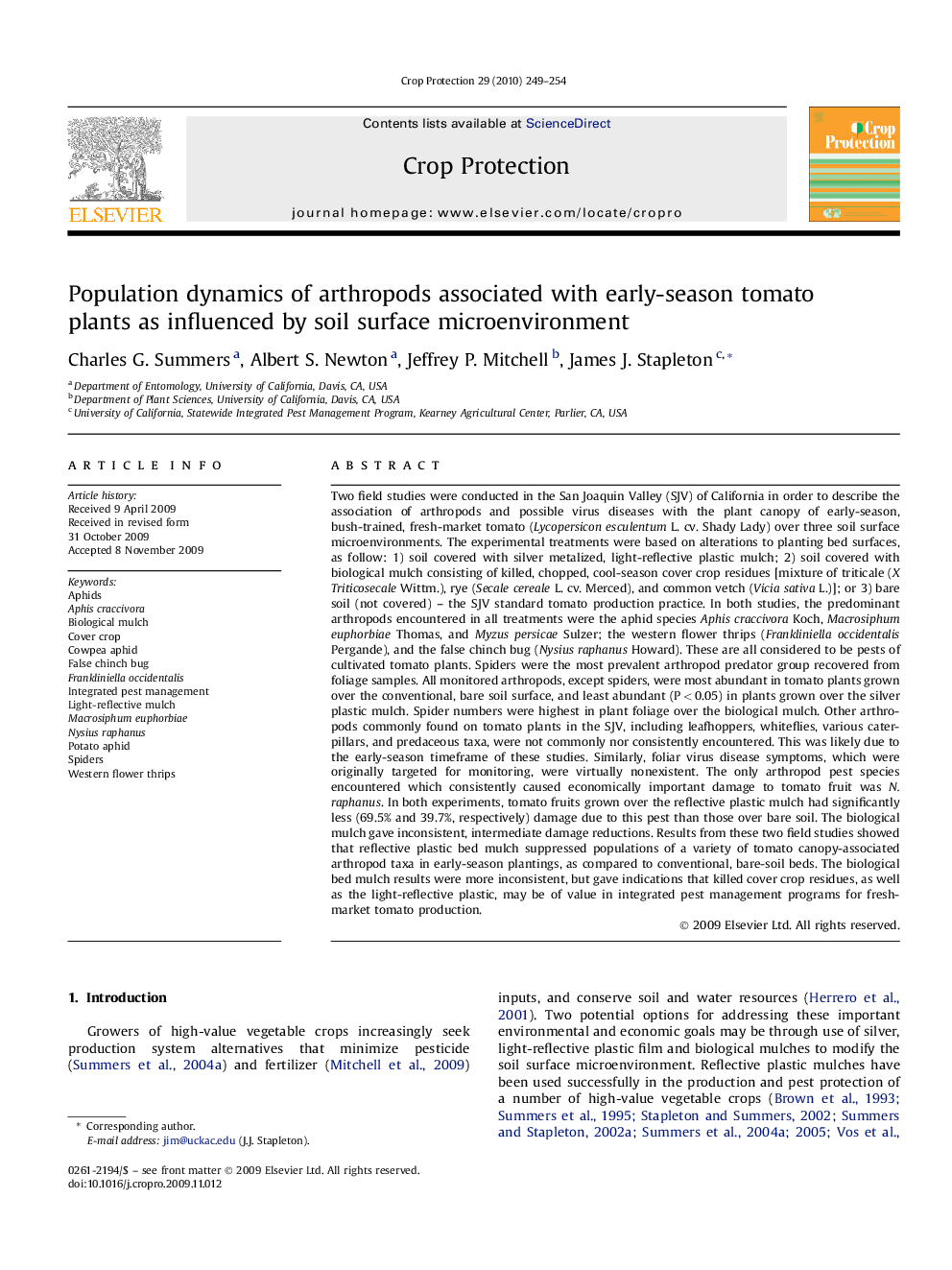| کد مقاله | کد نشریه | سال انتشار | مقاله انگلیسی | نسخه تمام متن |
|---|---|---|---|---|
| 4507103 | 1321340 | 2010 | 6 صفحه PDF | دانلود رایگان |

Two field studies were conducted in the San Joaquin Valley (SJV) of California in order to describe the association of arthropods and possible virus diseases with the plant canopy of early-season, bush-trained, fresh-market tomato (Lycopersicon esculentum L. cv. Shady Lady) over three soil surface microenvironments. The experimental treatments were based on alterations to planting bed surfaces, as follow: 1) soil covered with silver metalized, light-reflective plastic mulch; 2) soil covered with biological mulch consisting of killed, chopped, cool-season cover crop residues [mixture of triticale (X Triticosecale Wittm.), rye (Secale cereale L. cv. Merced), and common vetch (Vicia sativa L.)]; or 3) bare soil (not covered) – the SJV standard tomato production practice. In both studies, the predominant arthropods encountered in all treatments were the aphid species Aphis craccivora Koch, Macrosiphum euphorbiae Thomas, and Myzus persicae Sulzer; the western flower thrips (Frankliniella occidentalis Pergande), and the false chinch bug (Nysius raphanus Howard). These are all considered to be pests of cultivated tomato plants. Spiders were the most prevalent arthropod predator group recovered from foliage samples. All monitored arthropods, except spiders, were most abundant in tomato plants grown over the conventional, bare soil surface, and least abundant (P < 0.05) in plants grown over the silver plastic mulch. Spider numbers were highest in plant foliage over the biological mulch. Other arthropods commonly found on tomato plants in the SJV, including leafhoppers, whiteflies, various caterpillars, and predaceous taxa, were not commonly nor consistently encountered. This was likely due to the early-season timeframe of these studies. Similarly, foliar virus disease symptoms, which were originally targeted for monitoring, were virtually nonexistent. The only arthropod pest species encountered which consistently caused economically important damage to tomato fruit was N. raphanus. In both experiments, tomato fruits grown over the reflective plastic mulch had significantly less (69.5% and 39.7%, respectively) damage due to this pest than those over bare soil. The biological mulch gave inconsistent, intermediate damage reductions. Results from these two field studies showed that reflective plastic bed mulch suppressed populations of a variety of tomato canopy-associated arthropod taxa in early-season plantings, as compared to conventional, bare-soil beds. The biological bed mulch results were more inconsistent, but gave indications that killed cover crop residues, as well as the light-reflective plastic, may be of value in integrated pest management programs for fresh-market tomato production.
Journal: Crop Protection - Volume 29, Issue 3, March 2010, Pages 249–254